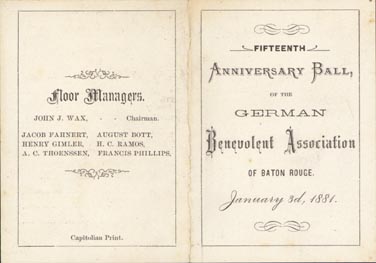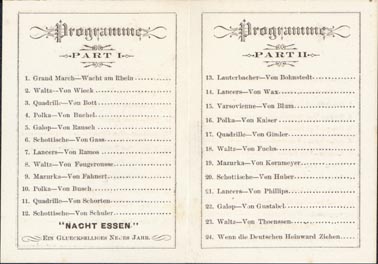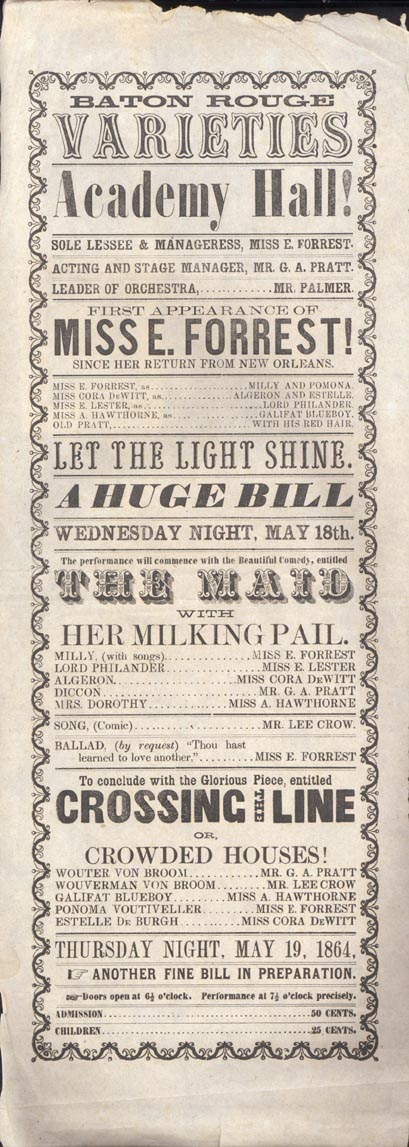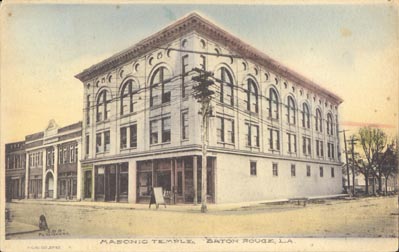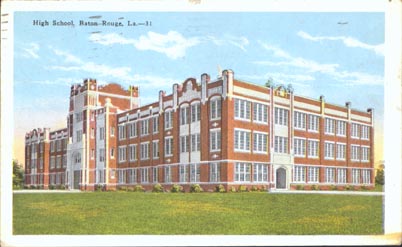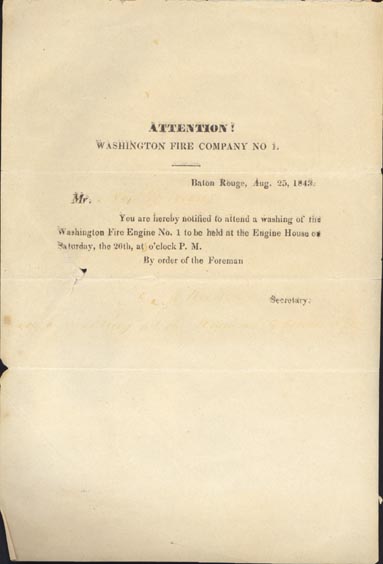
Case 4: Social History
Churches were the center of social activities in early Baton Rouge. The first churches were St. Joseph's Catholic Church, dating from the 1790s, St. James Episcopal Church, 1820, the Presbyterian Church, 1827, the First Methodist Church, 1834, and the Baptist Church of Baton Rouge, 1874. The Congregation B'Nai Israel was first organized in 1859.
Newly established religious congregations mirrored the settlement of new groups of people in Baton Rouge. Prior to 1831 all sermons at St. Joseph's Catholic Church were delivered in French. Today various congregations in Baton Rouge hold services in English, Spanish, Chinese, and Vietnamese. Baton Rouge also has Hindu and Buddhist temples.
The development of schools paralleled the establishment of churches. Early Catholic and private schools were available to upper-class white children. Public education did not begin until 1848, when two boys' schools and one girls' school were established. They were poorly supported and sparsely attended. Privately run schools such as the Collegiate Institute educated the city's prominent citizens.
Public schooling for African-American children was not provided until after 1905. Federal desegregation suits to create equal education for all children, regardless of race, were common from the late 1950s until 1996, when a court settlement ended fifteen years of forced busing and, in large part, returned students to a system of neighborhood schools.
In the eighteenth and nineteenth centuries, ethnic groups often formed social organizations to aid their members. A noteworthy example is the German Benevolent Association founded in the 1840s.
Other social groups included the St. James Lodge (Masonic Lodge), one of the oldest men's organizations in continuous operation in Baton Rouge, established in 1844.
In November 1849 a devastating fire swept through Baton Rouge, destroying 20% of the town. Citizens organized to fight fires more effectively. They bought two small hand engines and forming the Washington Fire Company No. 1 and the Independence Fire Company No. 2. From the 1870s to 1900 the annual Fireman's Parade held on February 22 was the grandest holiday in Baton Rouge, celebrated even more lavishly than Mardi Gras. Wives and daughters made decorations for the floats representing the fire companies. Various social and fraternal organizations joined the parade.
Items Displayed:
Items listed below were part of the exhibition but some are not pictured on this page.
Frank Marion Uter. A History of the Catholic Church in Baton Rouge, 1792-1992. Baton Rouge: St. Joseph Cathedral, 1992. LLMVC BX1418 B28 U83 1992.
"Programme of the Annual Closing Exercises of the Collegiate Institute, 1887" LLMVC, William S. Hamilton Papers.

"German Benevolent Society Constitution and Bylaws, 1851." LLMVC, Gertrude Saucier and Family Papers
